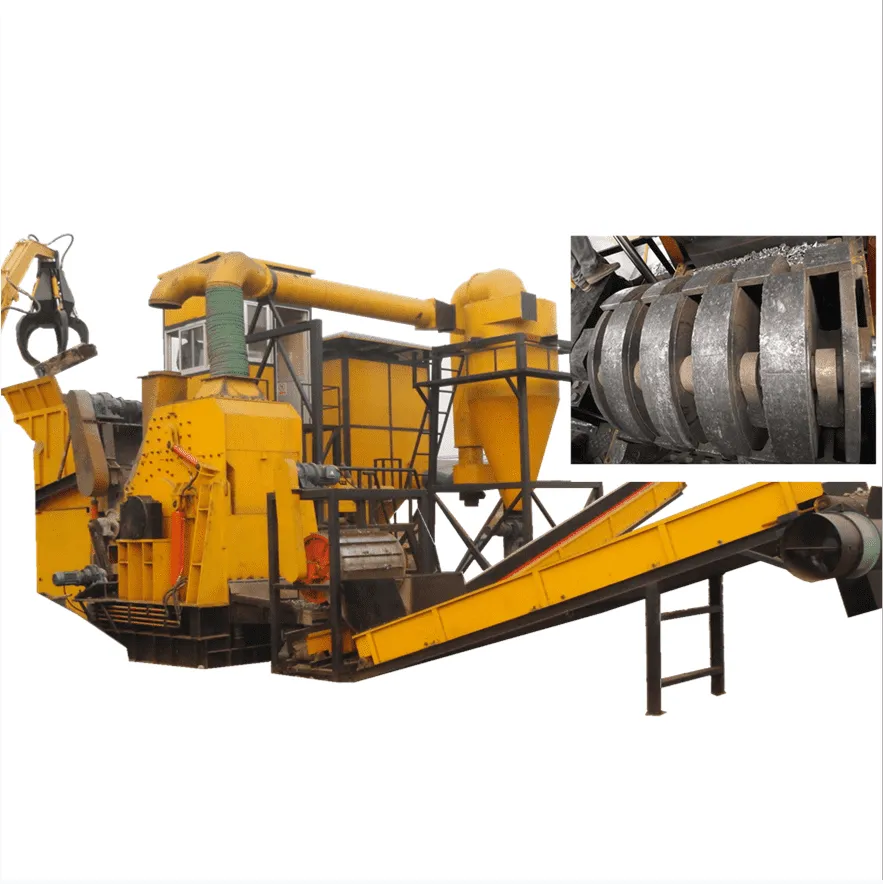Industrial metal shredder machines have emerged as indispensable assets in the world of recycling and waste management. These colossal devices have a transformative impact on how industries handle scrap metal, enhancing both economic and environmental efficiency. Drawing from extensive expertise and experience in the domain, this article delves into the nuances of industrial metal shredders, highlighting their benefits, mechanisms, and applications.

Understanding the Complexity of Metal Shredding Industrial metal shredders are engineered to reduce large pieces of metal into manageable sizes for further processing or recycling. These machines feature robust construction, often incorporating hardened steel and specialized components designed to withstand high stresses and material abrasions. Their operational mechanisms typically involve powerful motor-driven rotors equipped with sharp, durable cutting blades capable of dismantling even the toughest metals swiftly. The precision engineering behind these devices ensures consistent performance over prolonged periods, making them reliable partners for industries.
Applications Across Sectors These machines find prominent applications across various sectors. In the automotive industry, for instance, they efficiently process end-of-life vehicles, converting bulky structures into compact pieces. This process not only facilitates easier transportation and smelting but also enables the recovery of valuable non-ferrous metals. Similarly, in the electronic waste management sector, industrial shredders efficiently handle discarded appliances, ensuring maximal recovery of precious metals while minimizing environmental hazards posed by toxic components.

Economic and Environmental Benefits Adopting industrial metal shredders leads to significant economic advantages. By transforming scrap into monetizable resources, businesses can optimize their waste management processes, effectively reducing costs and generating new revenue streams. Economies of scale are realized as these shredders can handle vast volumes of material, thus catering to mass processing demands. Environmentally, shredders contribute to reducing landfill use, reducing greenhouse gas emissions associated with raw material extraction and processing.
industrial metal shredder machine
Enhancing Operational Safety Safety is of paramount concern in industrial operations. Many contemporary metal shredders incorporate advanced safety features designed to protect both operators and equipment. Automated systems can detect anomalies in operation, initiating emergency shutdowns when necessary. Additionally, control interfaces are designed to be user-friendly, allowing operators to monitor and adjust processes with ease, thereby minimizing the risk of accidents.
Integrating Technology and Innovation The field of metal shredding has witnessed substantial advancements, with technology playing a critical role in enhancing machine capabilities. Integration with computerized control systems enables precise monitoring of operational parameters such as temperature, pressure, and blade wear. Many shredders now feature smart sensors and IoT connectivity, allowing for remote diagnostics and predictive maintenance, which further optimizes uptime and efficiency. Such innovations not only streamline operations but also extend the lifespan of the equipment, offering long-term value to industrial users.
Expert Opinions and Industry Trends Leading industry experts advocate for the broader adoption of metal shredders, citing their sustainability benefits and economic viability. A trend towards modular designs has emerged, providing flexibility and scalability to meet growing industrial demands. As global environmental regulations tighten, companies are recognizing the value in investing in sophisticated shredding technologies to ensure compliance and promote corporate responsibility.
In conclusion,
industrial metal shredders stand as cornerstone technologies in the modern recycling landscape. Their adept capabilities in processing metal waste align economic goals with environmental responsibility. With ongoing advancements and expert advocacy, these machines will continue playing a critical role in supporting sustainable industrial practices, making them a wise investment for forward-thinking businesses.


